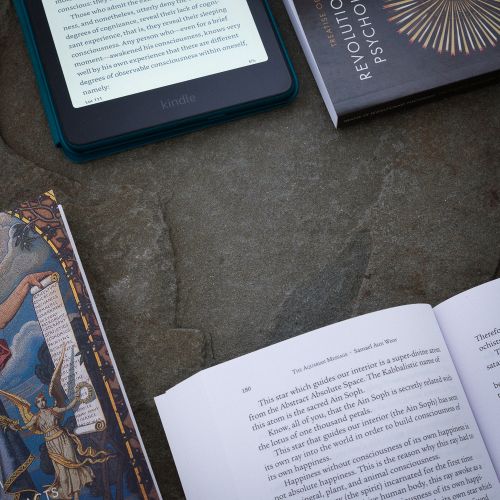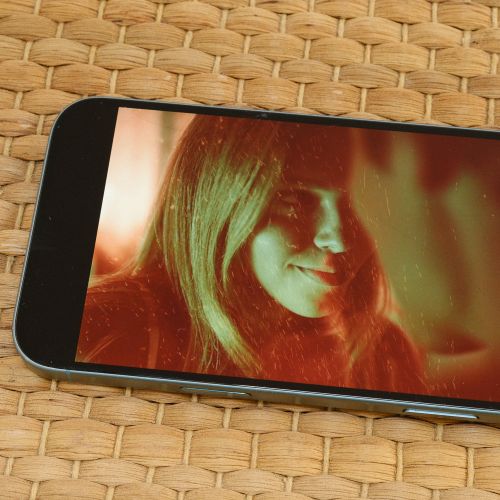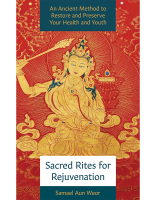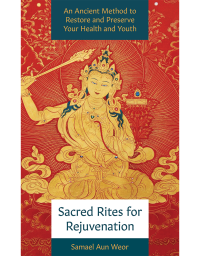It is necessary to know that in our human body, in our cellular organism, we have some chakras1 that we can qualify as specific, special for our organic vitality. They are like vortices through which Prana,2 life, enters into our organism. They are, namely:
- First, the occipital [pineal gland]
- Second, the frontal [pituitary gland]
- Third, the laryngeal located at the throat [thyroid gland]
- Fourth, the hepatic [liver]
- Fifth, the prostatic / uterine
- Sixth and seventh are the two related chakras located at the knees
So, these are the seven basic chakras [related to organic vitality; there are additional chakras in the organism]; again, these are important for the vitality of our physical organism since through these chakras, the life, Prana, enters our vital body,3 which is the seat of all organic activity.
For example, the laryngeal chakra [in the throat] maintains a close relation with the prostatic / uterine chakra; this is why what we say, our words, must be carefully weighed. Likewise, we need to carefully avoid making very low or shrieking sounds when we speak; i.e., if we carefully observe decrepit old people, we can easily verify that when they speak they emit sounds that we could perfectly call shrieking; these sounds corrupt their sexual potency, or accurately indicate impotency. The same occurs with sounds that are too deep or cavernous; these also corrupt the sexual potency. Therefore, the male’s voice must remain within its normal range; likewise, the woman’s voice must not be too low or shrieking, because this corrupts her sexual potency due to the intimate relationship between the larynx and the sexual center. The former statement could be challenged since the woman does not have a prostate. True, she does not have a prostate, yet she has a chakra related to her uterus, and this plays a very important role in her body, as important as the prostatic chakra in the man. In the woman, we could call this chakra the uterine chakra, and we already know the importance of the uterus in the woman.
After this short preamble, and as a matter of information, for the benefit of our Gnostic brothers and sisters we are going to narrate something of great significance.
It so happened that sometime ago in India there lived an English colonel who was about seventy years old. He was retired from active military service and had a young friend. The colonel heard about a monastery of lamas4 in Tibet where old people become young, in other words, where many who arrived old left young. The method to accomplish this is something that I will transcribe later in a precise manner for all of you. At this moment I only want to explain how these six rites make it possible to bring back youth, which was the concern of the English colonel.
First of all, we must always seek to be in good health, because a healthy body is good for everything, withstands everything, and responds at all moments so that we can demand from it our material and spiritual work. So, the first thing, as I already stated, is to cure the body and to maintain its resistance throughout our entire lifetime. Therefore, we must maintain it in good condition, because what can one do with a sick body? It is obvious that an esotericist, an initiate, must never be sick; illnesses and tormenting problems are for people who are not on the real path, is it not so? Indeed, those who are on the path should neither be decrepit nor sick; this is clear.
Therefore, this is why there is a series of very important esoteric exercises; i.e. much has been stated in esotericism, in Kundalini Yoga,5 about the Viparitakarani Mudra, likewise about the dancing dervishes or whirling dervishes. In Pakistan, in India, etc., the dervishes know how to execute certain marvelous dances in order to awaken certain faculties, powers, or chakras. Thus, it is urgent to know all of this if we want to have a youthful body and to develop the chakras. Therefore, let us study this series of exercises.
Young people do not appreciate the value of youth because they are young, yet old people do appreciate the treasure of youth. Thus, with the practices of the six rites that we will demonstrate, an old person can rejuvenate; in other words, if the person is old, he or she can recapture their youth. It is clear that if the person is young, he or she can remain young by means of these rites.
Any person can cure his pains with these exercises; among them, we will show here:



These are a synthesis of esoteric exercises, documented in India, Persia, Pakistan, Turkey, Yucatan, Mexico, etc.
I have read some of the publications out there; regrettably, they do not teach the fully equilibrated formula as it should necessarily be. Therefore, what I am going to teach to all of you is very important and it must be very well taught in South America and to all the brothers and sisters of the Gnostic Movement, so that old people can become youthful again; Gnostics who are seventy years old can, for example, become as if they were thirty-five or forty years old.
Some will question why I do not look younger. I will answer them that it is simply because I was not interested in preserving this physical body, but now, as I was informed that I could conserve this body for an indefinite time in order to initiate the Age of Aquarius,6 it is obvious that for this reason I have to practice these exercises.
Sometime ago I read a publication that had these rites in it; this was sent to me from Costa Rica. Notwithstanding, these rites are not the exclusive patrimony of anyone.
There are some monasteries in the Himalayas and in other places where these rites are practiced, mainly in a monastery that is called “The Fountain of Youth”; however, even though many exercises are practiced there, I did not find the complete documentation of these exercises in the above-mentioned publication. I obtained some data from the mentioned monastery, which I know very well, and other data from other schools in India that I also know very well.
When one takes the trouble of traveling a little through Turkey, Persia, Pakistan, etc., then one can learn something about the dancing or whirling dervishes, etc.
We need to reflect a little about what being on one’s knees symbolizes, since when one is a child, one unconsciously practices certain exercises.
Now, I am going to continue the very intriguing narration that I read in that publication, which is the very interesting story of that English colonel that I am going to write in detail so that all of you can have an exact and complete idea about the benefits that are acquired with the exercises that I am teaching here.
In the above-mentioned magazine, they wrote of the case of that seventy-year-old English colonel, who learned in India of the existence of a monastery in Tibet where people could rejuvenate. He invited a friend to come along with him. Yet, since his friend was young, obviously he did not listen; the young man would have thought why should he go in search for a place to rejuvenate since he was already young.
On the day of the wretched old-man’s departure, his young friend—as is to be expected—laughed a great deal when seeing the wretched seventy-year-old man with his cane, bald head, a few white hairs, very old, traveling towards the Himalayas in search of youth. In the mind of his young friend the following thoughts arose: “How funny is this old man: he already lived his life and wants to live it again.” Thus, he saw the old man leaving and the only thing it caused in him was laughter.
Interestingly, after about four months, the colonel’s young friend received a letter from the old man in which he was informed that the colonel was already on the track of the monastery called “The Fountain of Youth.” This, of course, caused only laughter to the young man; thus this subject-matter lingered.
Then, indeed, four years later, something happened that was no longer a laughing matter. Someone presented himself at the house of the young man and knocked on the door. The young man opened the door and said, “At your service; what can I do for you?”
The visitor, who appeared to be a man about thirty-five to forty-years old, answered, “I am colonel so-and-so.”
“Ah...,” said the young man, “Are you the son of the colonel who left for the Himalayas?”
The visitor answered, “No! I am the colonel himself.”
The young man answered, “That is not possible. I know the colonel; he is my friend. He is an old man and you are not old.”
The visitor answered, “I repeat: I am the colonel who wrote you a letter four months after my departure. In it I informed you that I had found the way to the monastery.”
Thereafter, the visitor showed his documentation to his young friend; indeed, his young friend was astounded.
What is intriguing about this is that during his time in the Himalayas in that monastery called “The Fountain of Youth,” the colonel saw many youths with whom he established friendships. There was not a single old person in that monastery; everybody was young. He was the only old person; all the others were people between thirty-five and forty years of age. However, after a while, when he had become very good friends with many of them, he discovered that all of them were more than one hundred years old. In other words, all of them surpassed his age, but none of them appeared as an old person. Obviously, the colonel was astounded, and thus he dedicated himself to the discipline of that monastery and succeeded in re-conquering his youth.
Well, I read the entire story in that publication they sent me. Nevertheless, I personally know that monastery: I have been there; it is a very large building with immense courtyards. The males work in one courtyard and the female initiates in another. The female initiates in that monastery are not only Tibetan women, but English, French, German, and women from other European countries.
Since ancient times, I have known all the exercises that are taught in that monastery. I.e.:
I have long known the whirling movements of the Mohammedans; these dances constitute part of the esoteric aspect of Mohammedanism and are practiced—as I already stated—by the whirling dervishes.
As far as the kneeling position is concerned, that belongs to the special technical movements of esoteric mysticism.
As for the table posture, this is found in Yucatan.
As for the position which some call the lizard posture —which is an exercise meant to reduce the abdomen—it is documented in Hindustan, in Kundalini Yoga, and is simply called Mayurasana.
The laying position with perpendicular legs (upward feet) has abundant documentation. This has always been known as the Viparitakarani Mudra; we find it in many sacred texts.
Likewise, the famous Vajroli Mudra, which is useful for sexual transmutation for bachelors and bachelorettes; Vajroli Mudra also helps a great deal those who work with the Sahaja Maithuna.
Many publications have been printed concerning this series of exercises, yet they are not the exclusive property of any person, and as I stated, few are those who know the esoteric part of them. I know the esoteric part of them, not merely because of what might be said in the mentioned publication from Costa Rica, or the many others publications that we have read and which have published these exercises, but because I have known them since a very long time ago.
Indeed, I have known these rites practically since Lemuria.7 For example, I practiced the Viparitakarani Mudra intensely when I was reincarnated on the continent Mu or Lemuria; thus I know practically how very important this is.







